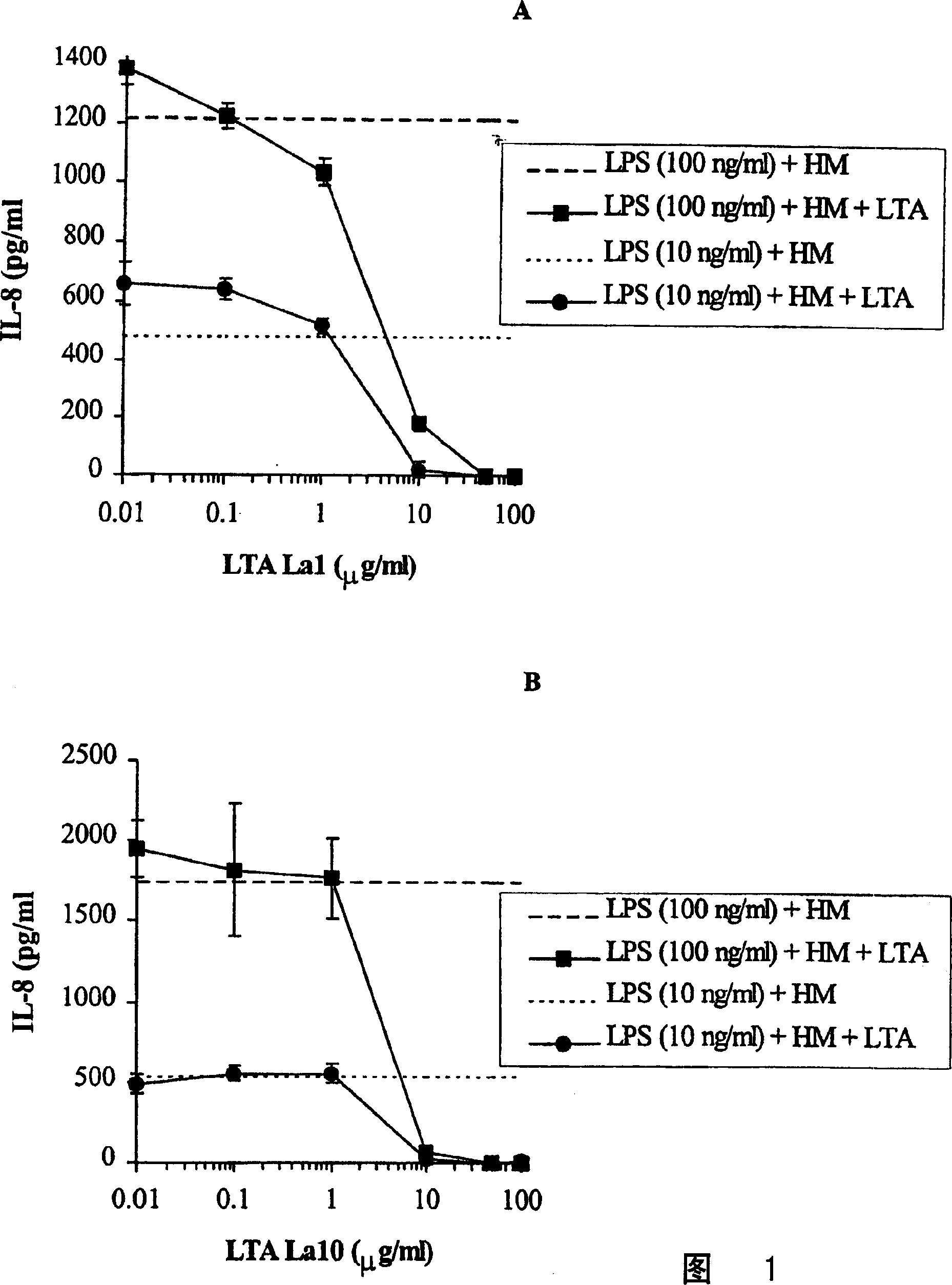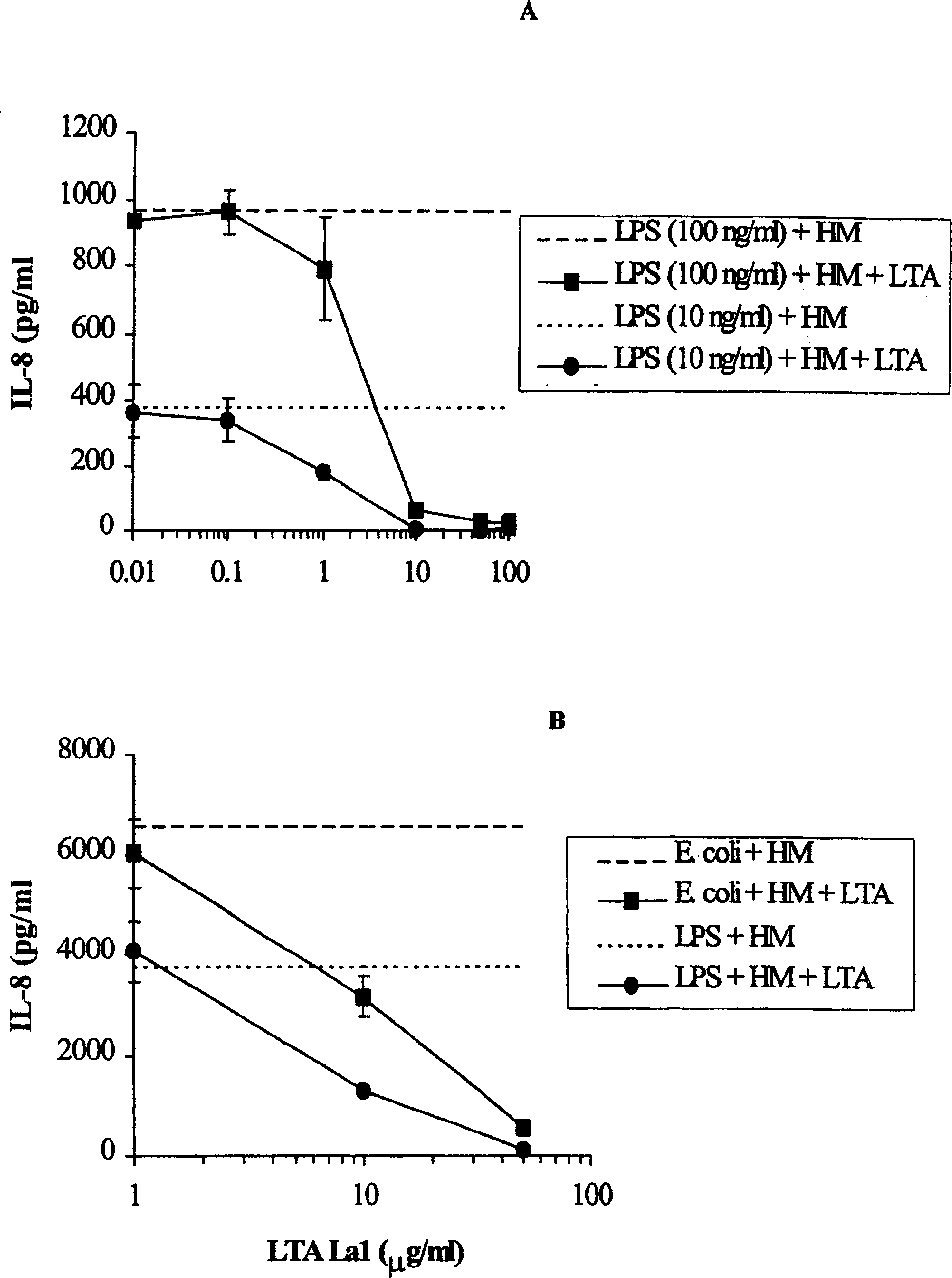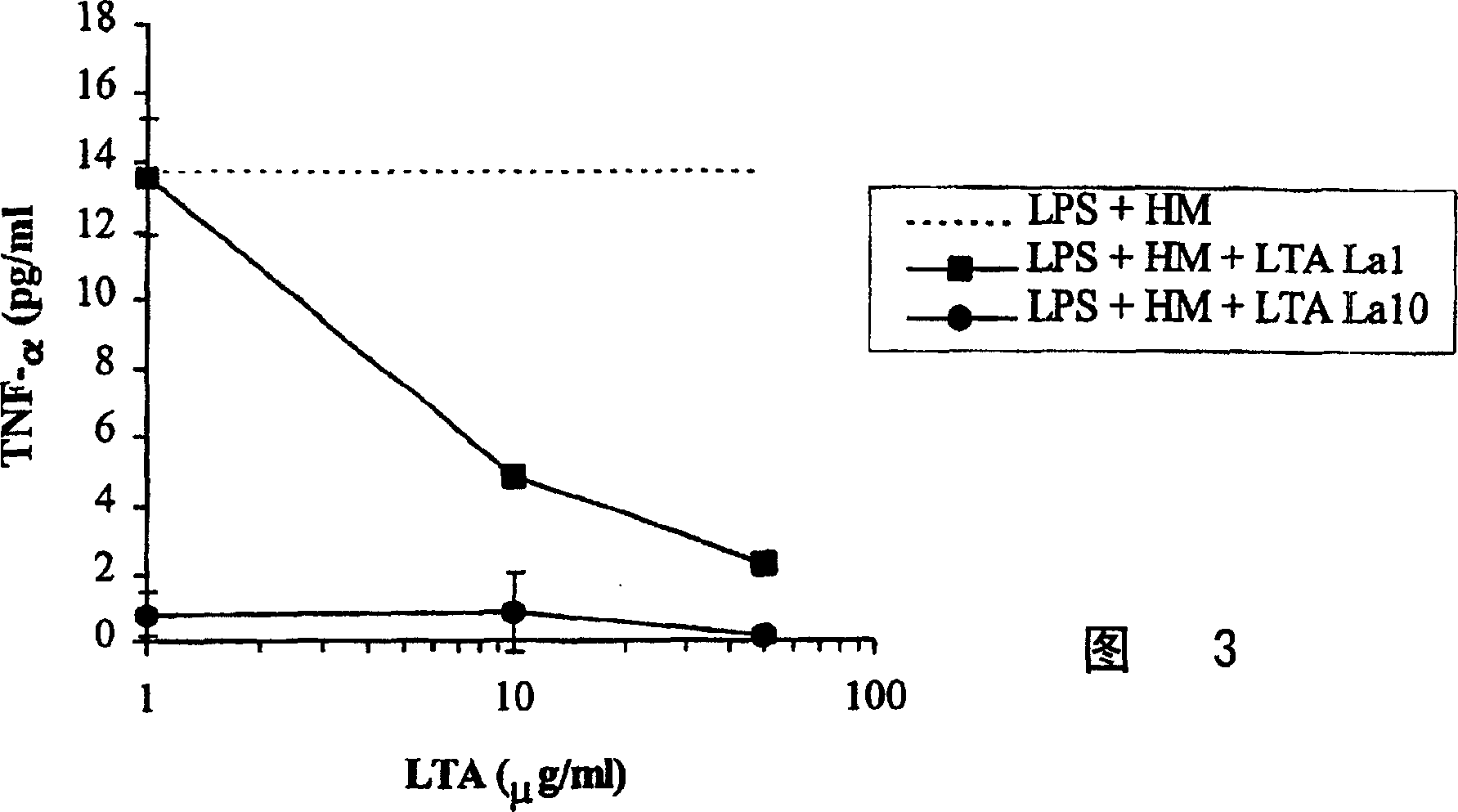Lipoteichoic acid from lactic acid bacteria and its use to modulate immune responses mediated by gram-negative, potential pathogenic gram-positive bacteria
A technology of Gram-negative bacteria and Gram-positive bacteria, applied in the oral cavity to regulate bacterial colonization, the field of immunity, to reduce the risk of inflammation and infection, and improve the effect of protective immune process
- Summary
- Abstract
- Description
- Claims
- Application Information
AI Technical Summary
Problems solved by technology
Method used
Image
Examples
Embodiment 1
[0067] Example 1: Lipoteichoic acid from Lactobacillus johnsonii NCC 533 strain and Lactobacillus acidophilus NCC 90 strain antagonizes the response of human intestinal epithelial cells to LPS or Gram-negative bacteria
[0068] Materials and methods
[0069] Cells, Media and Reagents
[0070] The human colon adenocarcinoma cell line HT29 was obtained from the American Type Culture Collection (ATCC, Manassas, VA. ATCC: HTB-38). at 5% CO 2 Undifferentiated cells were maintained in glucose-containing DMEM supplemented with 10% fetal calf serum (FCS; AmimedBioConcept, Allschwill, Switzerland) at 37°C in an incubator / air incubator, while differentiated cells were maintained in glucose-free grow in medium. Change the medium every two days until the cell monolayer reaches 90% confluency. Human peripheral blood mononuclear cells (PBMC) were isolated from heparinized adult blood donors by density gradient centrifugation with Ficoll-Isopaque (Pharmacia). The isolated PBMCs were was...
Embodiment 2
[0096] Example 2: Baby food
[0097] To obtain infant formula, we prepare a mixture containing in 100 ml: 0.5-5%, preferably 2% peptide; 0.2-10%, preferably 4% fat; 1-25%, preferably 8% % non-fructan carbohydrates (including 65% lactose, 20% maltodextrin, 15% starch); at least 10 6 cfu / ml of the following strains: Lactobacillus acidophilus NCC90 (CNCM I-2332) or Lactobacillus johnsonii NCC 533 (CNCM I-1225); trace amounts of vitamins and minor elements required daily; 0.01-2%, preferably 0.3% minerals; and 50-90%, preferably 75% water.
Embodiment 3
[0098] Example 3: Use in dairy products
[0099] According to the present invention, one or several strains of Lactobacillus acidophilus NCC 90 (CNCM I-2332) or Lactobacillus johnsonii NCC 533 (CNCM I-1225) can be used to prepare fermented yogurt-like milk products.
[0100] For this purpose, 1 liter of milk product containing 2.8% fat supplemented with 2% skim milk powder and 6% sucrose was prepared. It was pasteurized at 96°C for 30 minutes and then cooled to 42°C. Precultures of non-thickening strains of Streptococcus thermophilus and non-sticky strains of Lactobacillus bulgaricus in sterile MSK medium containing 10% reconstituted milk powder and 0.1% commercial yeast extract Reactivate.
[0101] Precultures of one or several strains were also reactivated in media containing 10% reconstituted milk powder and 0.1% commercial yeast extract with 1% sucrose. Pasteurized milk products were inoculated with 1% of each reactivated preculture and fermented at 32 °C until pH 4.5 w...
PUM
 Login to View More
Login to View More Abstract
Description
Claims
Application Information
 Login to View More
Login to View More - R&D
- Intellectual Property
- Life Sciences
- Materials
- Tech Scout
- Unparalleled Data Quality
- Higher Quality Content
- 60% Fewer Hallucinations
Browse by: Latest US Patents, China's latest patents, Technical Efficacy Thesaurus, Application Domain, Technology Topic, Popular Technical Reports.
© 2025 PatSnap. All rights reserved.Legal|Privacy policy|Modern Slavery Act Transparency Statement|Sitemap|About US| Contact US: help@patsnap.com



